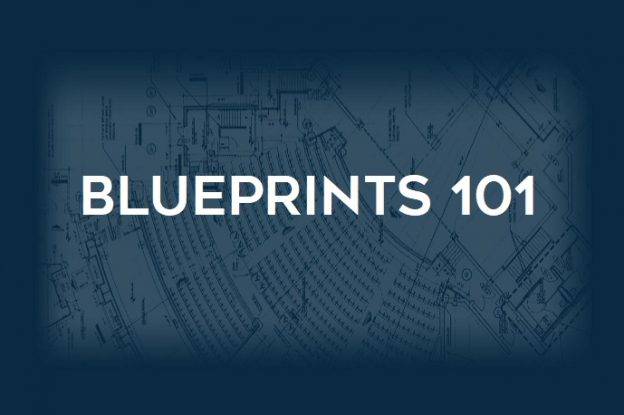Why train facility technicians to read blueprints? Blueprints are road maps not only for building your facility but for maintaining it over the years. And who plays a vital role in that maintenance? Your technicians. Often, these guys are the unsung heroes of school campuses. They spend their days behind the scenes, but everyone benefits from their efforts — working and learning in comfortable environments.
Technicians are skilled craftsmen in their areas of trade. Although most don’t have (or need) degrees in architecture, engineering, or construction, arming their skill with the ability to read plans only amplifies their service.
Here are 3 reasons to train your techs in blueprint reading….
1. Perspective
Picture a football game with a coach up in the box calling plays down to the field. Why is that? Because his viewpoint affords a perspective to see solutions that aren’t so obvious from the ground.
Here’s a building example. After every big rain, a certain office within a school building had water collecting on the floor along a wall. Multiple times the maintenance crew walked the roof and made attempts to patch different areas. And each time it rained again, the office again had a puddle form on the floor. Within a few minutes of rolling out the blueprints, I could see the wall contained a plumbing vent. That vent went up to the roof. One trip to the roof showed the seal around the vent was broken. Easy fix, once the perspective from the blueprints was gained.
2. Time
Let’s say Pete the plumber is tasked to replace a water closet (that’s industry talk for a toilet). First, he must locate an isolation valve to shut off the fixture’s water supply. So Pete can either look at the plans (having a valve tag chart and plan is especially useful) and know exactly where he needs to go, or he can head out to the location and spend time hunting for the isolation valve. The hunt would most likely involve popping ceiling tiles until he landed on the right spot. I’ve seen a tech shut off water to a whole section of the building unnecessarily because he couldn’t locate the isolation valve. Which method do you think is more efficient?
3. ROI
Owners invest a lot in their facilities. From construction to ongoing maintenance, a lot of funds are spent. When technicians are equipped with the skill set to see how the whole building was put together, an increased return on maintenance is gained by efficiencies. But, that’s not the only return. Your technicians are acknowledged as the vital team members they truly are, and that makes the moral, initiative and service level increase. A win-win…good for the team and good for the individuals working and learning in the buildings.
Now it’s your turn! Do you have a story to share on how reading blueprints saved the day…or could have? How important do you think it is for facility teams to be trained in blueprint basics? Leave a comment below or email me at randy@buildingvault.com.
Our Building Vault team offers consulting services which includes training sessions. Read more about those services here.
